The number of dog collars and harnesses on the market can cause your head to spin.
Among the selections available, you’ll find an overwhelming cacophony of colors, patterns, and styles. They feature different designs, different materials, and different closures.
Nylon, cotton, leather.
Slip-on, step-through, no-pull.
Snaps, quick-release buckles, Velcro.
The options are endless.
But there’s one question that owners must consider at the outset: Do you want your dog to wear a collar or a harness? This is the first thing you must decide when picking a collar or harness — especially if you intend to use the collar or harness for training purposes.
How do you decide whether you want a collar or a harness? Which is best for your dog? Is there such a thing?
We’ll help answer all of these questions and more below! Let’s jump right in!
Dog Collars vs Harnesses: Key Takeaways
- There is no one-size-fits-all answer to the collar-vs-harness question. Every dog-and-owner situation is different, so it is just important that you think carefully about the question and select the best option for your specific pooch.
- Collars and harnesses both present different benefits and drawbacks. Collars, for example, can be more comfortable for some dogs to wear, but they fail to provide the same amount of control that harnesses do. Harnesses, on the other hand, are a bit heavy, but they can also help address pulling behavior.
- You probably want to try both a collar and a harness to find the best option for your pup. Frankly, you’ll likely find (as many owners do), that one works better in some situations, while the other works better in different scenarios.
Dog Collars and Harnesses: Which Is Best?

Spoiler alert: There’s no one definitive answer whether dog collars or harnesses are best.
The answer really depends on what your goals are, what your dog’s body is shaped like, and personal preference.
Many professional trainers use and own both collars and harnesses. Overall, I prefer well-fit and comfortable harnesses for most cases. There’s no one right answer though, so instead let’s explore the reasons that a collar or harness might be better for you and your dog.
You might prefer to use a dog collar instead of a harness if:
Your dog is sensitive to pressure on her sides or shoulder blades. Some dogs are really uncomfortable with the pressure of a harness or are fearful of the harness slipping over their head. While you can work on teaching your dog to be comfortable with the feeling of a harness, it might be easier to opt for a collar in this case.
Your dog has an extreme body shape. For some dogs (greyhounds are a great example), it’s hard to find a harness that fits perfectly. While harnesses, such as the PetSafe SureFit Harness, are highly customizable for oddly-shaped dogs, they can be difficult to fit properly at first and a collar might be more comfortable.
Your dog is well-trained and there’s no need for the extra control and safety of a harness. A dog that does not pull on a leash won’t harm herself with the pressure of a collar.
I prefer using a collar with Barley in training environments, but I opt for a harness while running, hiking, or otherwise enjoying ourselves.
You might prefer to use a dog harness instead of a collar if:
Your dog pulls on the leash and might damage her trachea or larynx with collar pressure. While a standard back-clip harness might make it easier for your dog to pull, it also keeps her throat safe from tracheal collapse. Get a front-clip harness, such as the 2 Hounds Design Freedom Harness or a head halter to use while you teach your dog to walk politely next to you.
Just remember that no tool will teach your dog how to walk politely on a leash. Only training can do that!
Your dog is an escape artist and can wiggle out of collars in no time. Some dogs back out of properly fitted collars, and this is a huge safety risk near roads or wilderness areas.
Consider opting for an escape-proof dog harnesses if you have a Houdini dog. The Ruffwear Webmaster has two straps behind the front legs, making it almost impossible to wriggle out of.
Martingale collars are another option for escape-minded mutts. These collars tighten to a predetermined amount when there’s pressure applied to them, which keeps them from tightening around your dog’s neck too much while also making them hard to escape from.
Your dog is on the small side. Tiny dogs can be quite fragile, making harnesses the safer option. In fact, some vets argue that no small or toy breed should use a collar. Small dogs are at higher risk for tracheal collapse, and you might not notice their pulling as much as with a large dog who drags you down the street.
The Mesh Wrap N Go Harness is an extra-comfy and extra-secure option for pint-sized pooches. Its Velcro is incredibly strong and the design pretty escape-proof, which will keep your pup safe — but keep an eye out to ensure you don’t Velcro her hair into it!
Your dog has a short snout. Brachycephalic breeds, including pugs, boxers, and bulldogs, are at extra risk for overheating and any air constriction from collar pressure can be dangerous. These dogs should always be walked on a nice, comfy harness that keeps pressure off of their necks.
You and your pet are engaging in heavy activity or movement. Even when dogs can walk nicely on leash, it’s best to use a harness if you’re going for a run, hike, or other big adventure. A good-quality dog harness that does not restrict shoulder movement will keep your dog comfortable while doing heavy activity.
If your dog is pulling you at all, as in canicross or skijoring, ensure that you have a harness specifically made for this. Harnesses that are made for pulling are very different from your average walking harness.
Head-to-Head: The Pros and Cons of Collars and Harnesses
Again, there’s no hard-and-fast rule regarding the selection of a harness or collar for your pup. The answer will vary from dog to dog, owner to owner, and situation to situation.
But to help you decide which one is best for your circumstances, we’ve outlined some of the pros and cons of each option below.
The Pros & Cons of Dog Collars
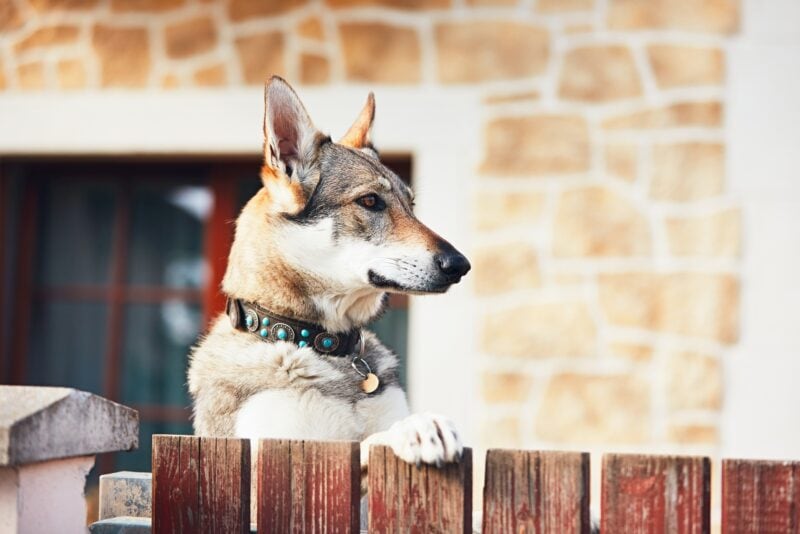
Thinking a collar is the right choice for your pet? Just keep the following benefits and drawbacks in mind:
Pros
- Lighter than most harnesses
- May be slightly more affordable than harnesses
- Easy to put on and take off
- They typically make it easier to achieve a good fit
- Some owners just prefer the aesthetics of a collar to a harness
- There are more style and color options available
- They generally won’t cause tangle problems as much as leashes
Cons
- Can place pressure on your dog’s neck and throat, potentially leading to serious problems, such as tracheal collapse
- Don’t provide much extra control — an especially noteworthy problem for those dealing with reactive dogs
- Some dogs can slip out of collars easily
The Pros & Cons of Dog Harnesses
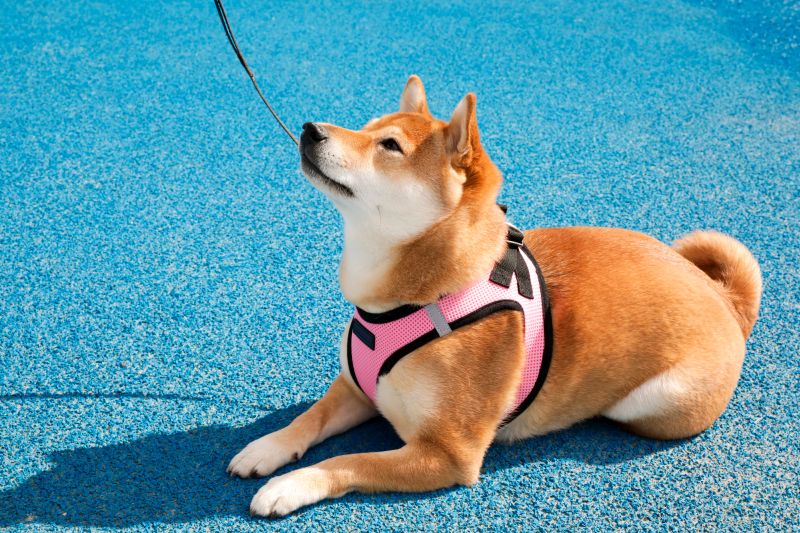
Just like collars, harnesses have a number of strengths and weaknesses you should consider, including the following:
Pros
- Harnesses provide more control of your dog than collars
- Harnesses spread out pressure over a large area of your dog’s body and aren’t likely to injure your dog’s throat or neck
- Many harnesses feature “no-pull” design elements
- Generally, harnesses are more escape proof than collars
Cons
- Harnesses can be tricky to fit on some dogs (including barrel-chested and uber-thin breeds)
- Harnesses can cost a bit more than collars
- Harnesses may not be super comfy for all canines
- Harnesses can be a pain to put on and take off
- They can cause issues with long fur
- Front-clip harnesses may result in leash-leg tangles
You likely noticed that collars enjoy a few more pros than harnesses do. But don’t just count up the numbers and think that means collars are always better — it is imperative that you consider which pros and cons apply to your specific pooch.
For example, if you need a little more control of your dog during walks, a harness will likely be the best option — even if it means you have to deal with the hassle of putting it on her every day.
Bottom Line: Should I Choose a Collar or a Harness?
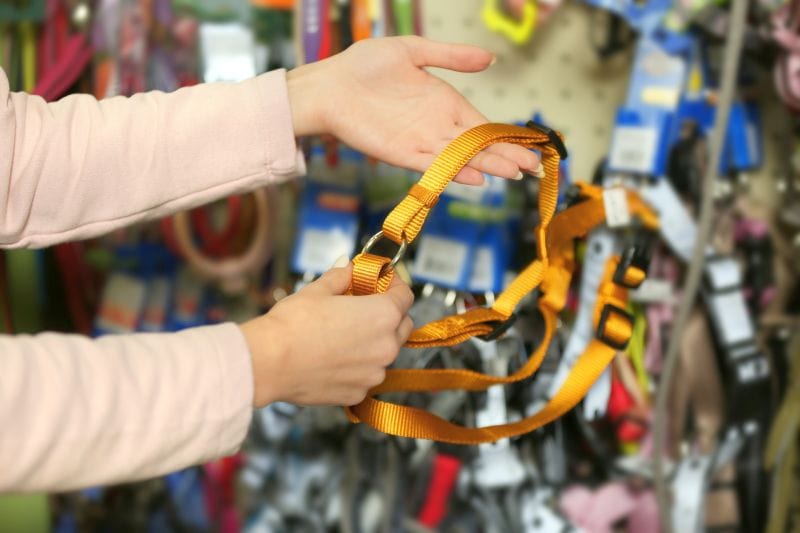
In most cases, a good-fitting harness is a safe bet.
The only time that I purposely avoid a harness with a dog is if the dog is afraid of the harness, we cannot find a harness that fits the dog properly, or the dog has an injury (like a rash on her stomach) that makes harnesses uncomfortable.
Otherwise, the benefits of harnesses often outweigh the benefits of collars in my book.
The bottom line is that choosing between a collar and a harness is a personal choice. Your preference may vary from day to day and depending on your activity. For example, my dog Barley wears his Ruffwear Front Range harness while we’re hiking, on casual walks, and in nosework class.
However, we use his flat buckle collar when we’re in agility or obedience classes and working on leash training.
We gathered around the virtual watercooler to find out what some of our other contributors use with their own dogs. Here’s what everyone had to say:
Megan Marrs, Founder and CEO: My sweet boy Remy usually wears a collar to hold his ID tags, but I tend to rely on a harness (specifically, the 2 Hounds Design Freedom No-Pull Harness) when we head out on walks or other outings. He is very easily excited and a teeny bit reactive, so I just prefer the additional control a harness provides.
Plus, I just think his harness looks super cute on him!
Ben Team, Editor: My girlfriend and I have two dogs – a Great Pyrenees and a Rottweiler. Both girls are about 80 pounds and somewhat reactive – especially to other doggos and strange men (the Rottie also has a problem with anything on wheels).
Given their size and behavioral challenges, I use harnesses on them whenever going on walks, hooking them to a dog tie out or trolley, or anytime we just need a little extra control (though they both have collars with ID tags they wear at all times).
I tend to prefer harnesses with a front-mounted leash clip and a handle on the back, so I generally use one like the Auroth or ICEFANG Tactical Harness.
Kelsey Leicht, Contributor: I use harnesses with my four-dog crew of a senior Chihuahua, two adult pit bull / Staffordshire mixes, and a boisterous Lab puppy. All are good walkers who don’t pull (aside from occasionally barking at bunnies), but I still prefer the control of a harness. I live in a neighborhood where it’s not uncommon to encounter dogs running at large, so it’s nice having a handle if needed.
Regarding styles, I prefer padded step-in harnesses with metal hardware since the pittie mixes have big heads that cause wonky fits with over-the-head options. The padding keeps them comfy, while metal hardware is more durable than plastic.
Kate Brunotts, Contributor: My partner and I share a sweet 10-pound shihpoo mix named Spicy. She’s pretty easy on the leash and doesn’t tend to pull unless particularly excited by another small dog (she has a thing for Pomeranians).
Since she’s so small, we opt for a harness to protect her from tracheal collapse. The extra control of the harness is great, especially on busy city streets, and we utilize the Pet Safe Easy Walk Harness which helps prevent unnecessary pulling.
The one downside of her harness is that there isn’t a lot of space for her ID tags, so she’ll usually walk wearing her harness and collar. The leash is always attached to the harness but her collar provides identification for peace of mind.
Dog Collars vs Harnesses: FAQ
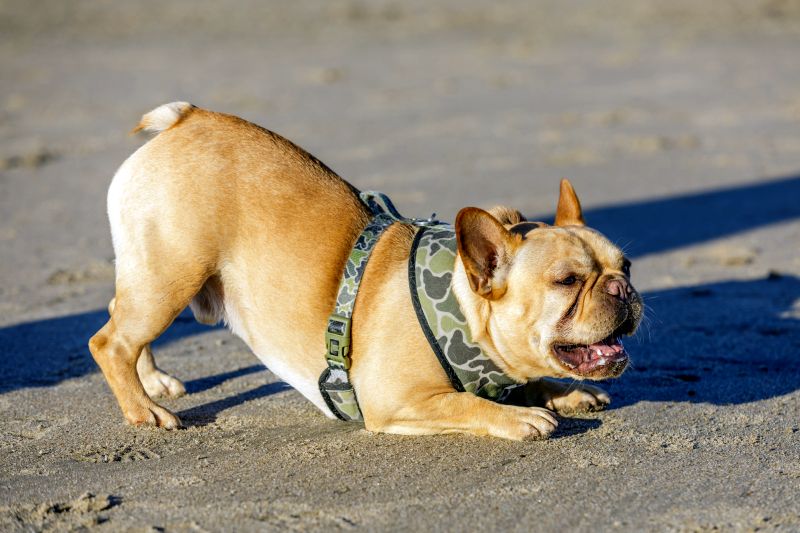
The entire collar-vs-harness debate causes confusion for many owners and leaves them with lingering questions. We’ll try to help address this by answering some of the most common questions on the subject below!
Are harnesses bad for dogs?
As long as you use a high-quality harness that’s properly fitted, a harness is unlikely to harm your dog. Just be sure to watch for places where the friction may irritate your dog’s skin and give your dog a break from wearing the harness periodically.
Is a harness better than a collar for puppies?
Harnesses can be better for puppies in some cases, but we wouldn’t consider this a concrete rule. As with dogs of all ages, you’ll want to consider your pup’s specific needs, try out both options, and stick to the best one for you and your pet.
Is a harness or collar better for large dogs?
It depends on the dog. A well-behaved doggo who isn’t reactive and exhibits perfect leash-walking manners may be just fine wearing a collar. On the other hand, dogs who pull, lunge at strangers, or participate in high-octane activities will likely be better served by a harness.
Should my dog wear a harness or a collar?
It really depends on the needs of you and your dog. Are you the owner of a relatively calm, easily controlled couch potato, who’s not at risk of tracheal collapse? A collar will probably work just fine. But if your dog is really large, really rowdy, or engages in canine sports or high-octane activity, you’ll likely be better off fitting her with a harness.
Do dogs like harnesses or collars better?
It depends on the dog. Collars are probably more comfortable as a general rule, but many dogs wear a harness without thinking twice about it — especially those who’ve grown accustomed to wearing one since a young age.
***
Now that you know what we do, we want to hear your thoughts! What do you think? What’s better — harnesses or collars? Do you have one you prefer over others? Let us know in the comments below!


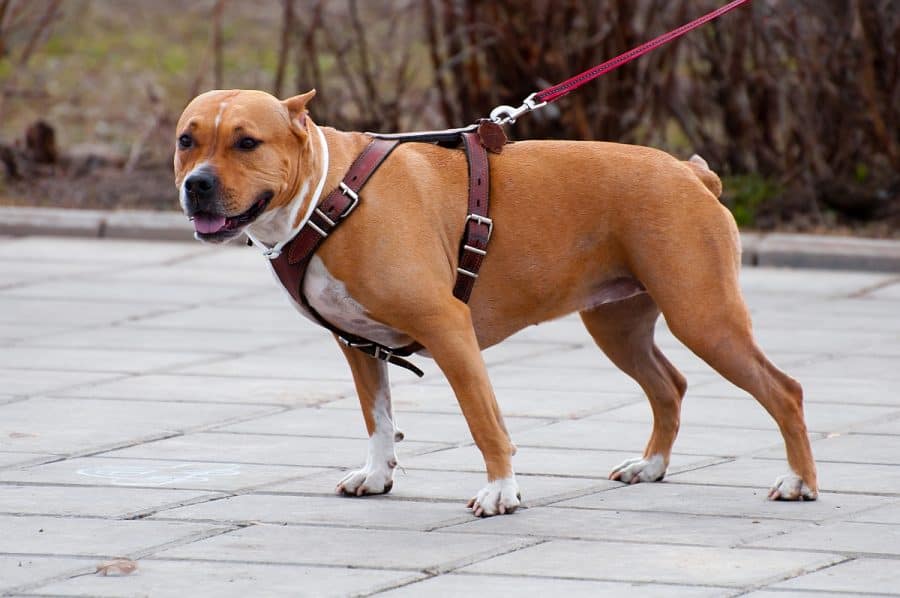


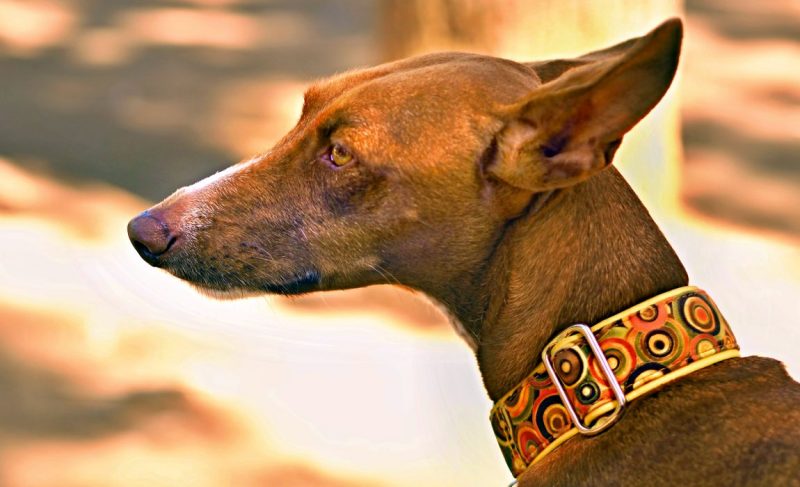
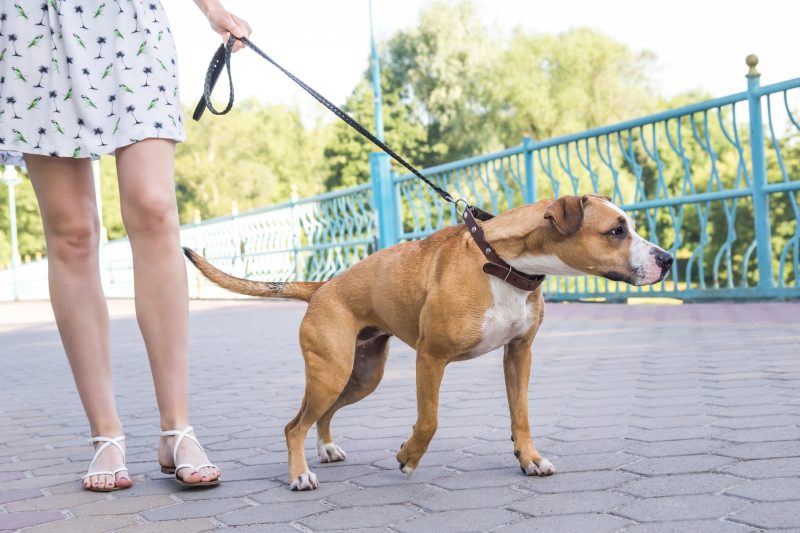


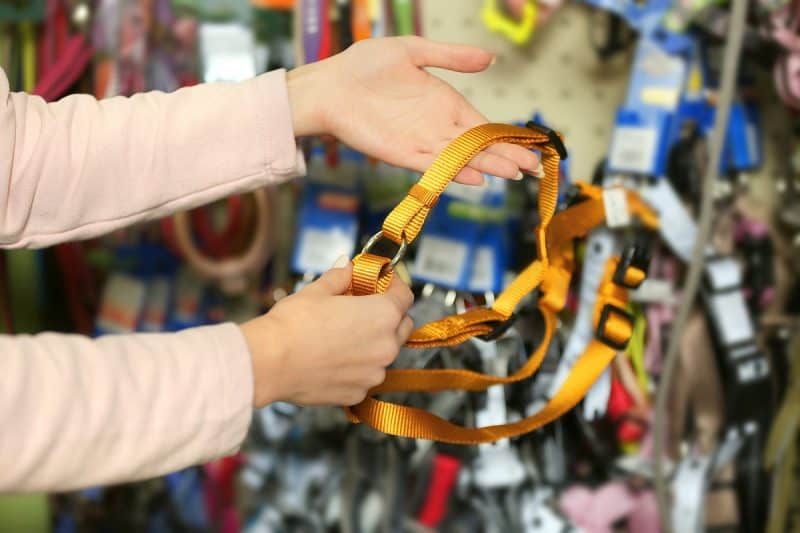
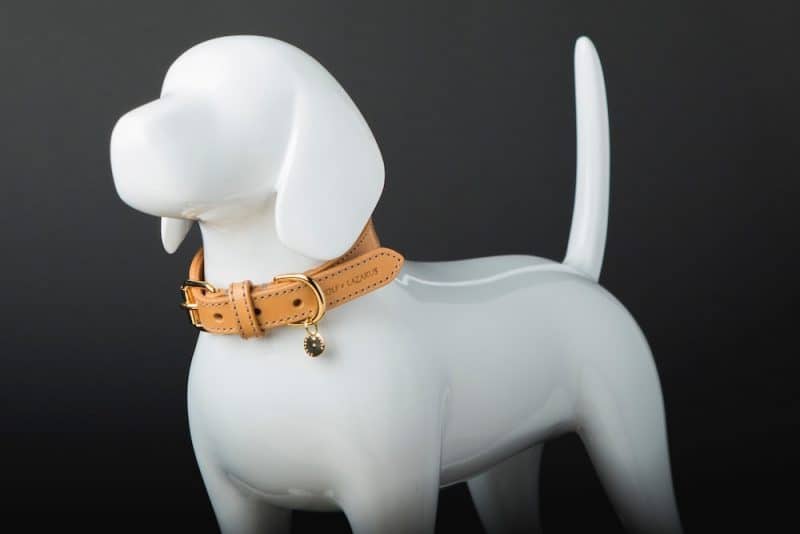
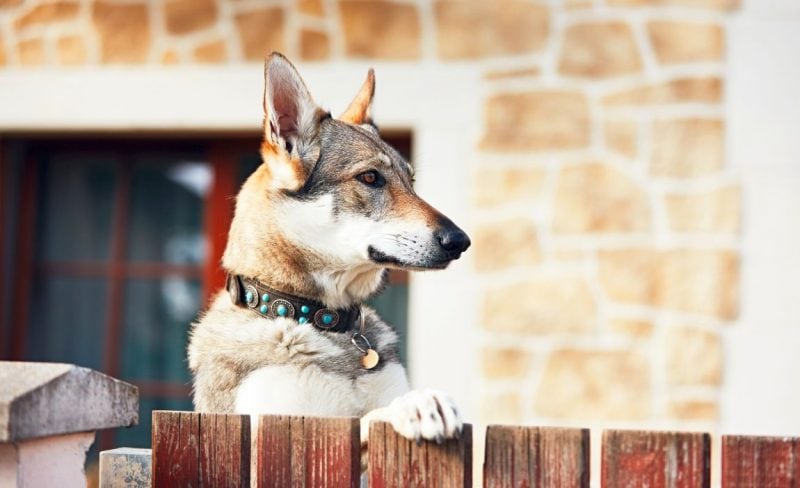

Leave a Comment